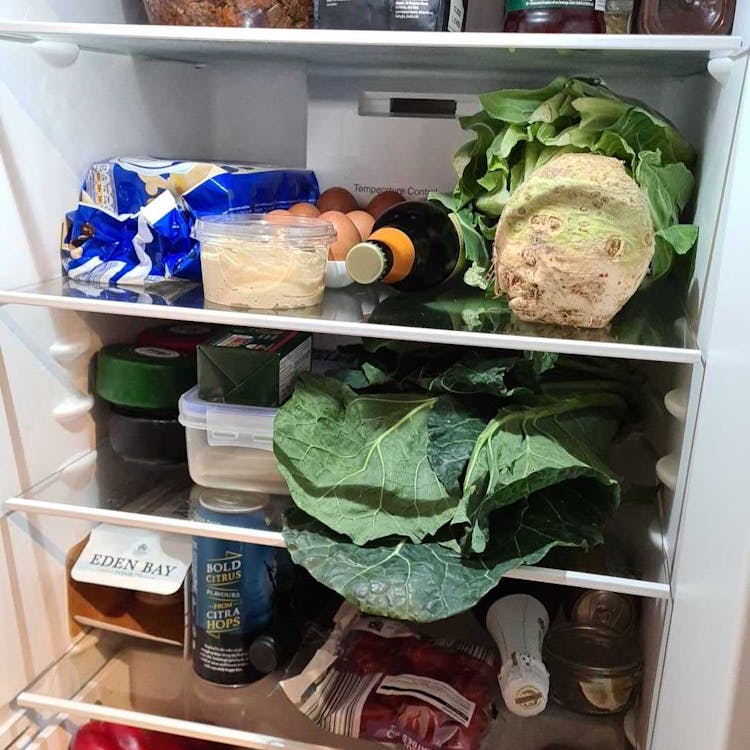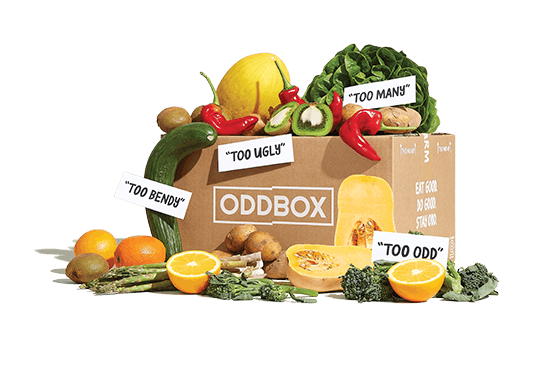How to organise your fridge
We’ve all been there – you discover a forgotten soggy cucumber at the back of the fridge or some leftovers that just got, well, left. 70% of UK food from farms is wasted once it reaches households, WRAP reports.
If you aspire to waste less food in 2022, you may be surprised how much easier it gets after making one small change – having an organised fridge.

How to store food in your fridge
Each type of produce has a part of the fridge where it’ll stay at its best for longer. That’s because the temperature and humidity vary in different areas of your fridge. Correct fridge storage will allow you to capitalise on this.
Fridge organising isn’t complicated – here’s our guide on how to store food in the fridge.
What goes on the top shelf of your fridge?
The average temperature in the top part of your fridge is between 5°C and 8°C. This is warmer than most other areas. Your top of fridge storage should be used for foods that don’t need cooking and foods that are cooked already.
These foods are perfect for the top shelf:
- Leftovers
- Baked treats
- Deli meats
- Ready meals
What goes on the middle shelf of your fridge?
The temperature in the middle part of your refrigerator is around 5°C. Dairy products should be stored in the refrigerator, and the middle shelf will keep them fresher for longer. If you don’t keep dairy in the fridge, fill this space with dips or plant-based alternatives.
Store foods on the middle shelf like:
- Yoghurt
- Cheese
- Milk
- Butter
- Dips, e.g. hummus or guacamole
- Plant milks
What goes on the bottom shelf of your fridge?
The temperature at the bottom shelf of your fridge edges close to 0°C, making it one of the coldest areas. If you’re wondering where uncooked meat should be stored in the fridge, this shelf is the ideal place. Organising a fridge with raw food on the bottom shelf, away from cooked food, also reduces the risk of cross contamination.
Store these items on your bottom shelf:
- Raw meat
- Raw fish
- Eggs
- Foods that won’t fit on the middle shelf – but keep them sealed
What goes in the crisper drawers?
The crisper drawers sit in the lowest part of a fridge layout. The temperature here is the coldest, but humidity is higher than on the bottom shelf. Store vegetables and some fruits in your crisper drawers, as the humid environment helps preserve their nutrients. The drawers also keep leafy products away from the back wall of the fridge where they can accidentally freeze.
Keep these items in your crisper drawers:
- Vegetables
- Fruits
- Salad leaves
- Fresh herbs
What should you store in the refrigerator door?
Unsurprisingly, the fridge door is the warmest area of the fridge. As it’s opened frequently, these compartments are the most susceptible to temperature fluctuations. Store foods and drinks that can stand warmer temperatures or contain natural preservatives here.
Stock your fridge door with:
- Opened sauces
- Opened jams or jellies
- Drinks, e.g. soda or juice
- Opened fortified wines
- Foods preserved in oil
How to extend the shelf life of foods
Learning how to store food in the fridge correctly isn’t the only way to get the most out of items. Some produce fares better outside of the fridge – like bread, tomatoes, unpeeled garlic, onions and potatoes.
For more tips on how to eke more days out of your produce, read up on our 10 easy ways to make your food last longer.

